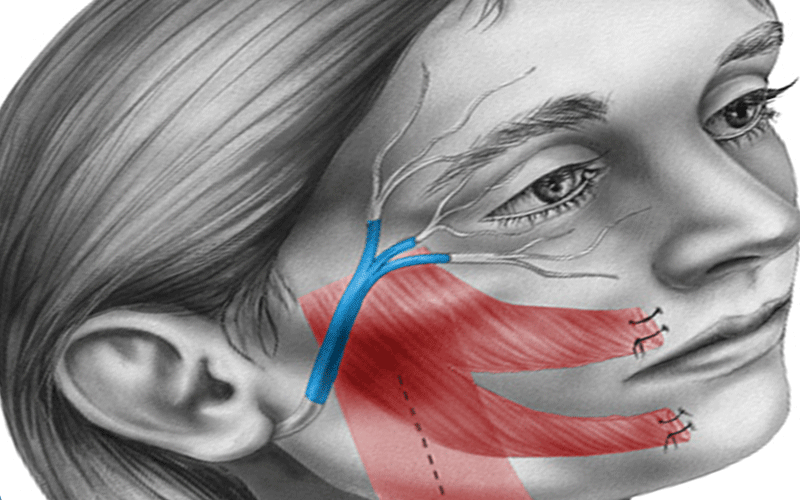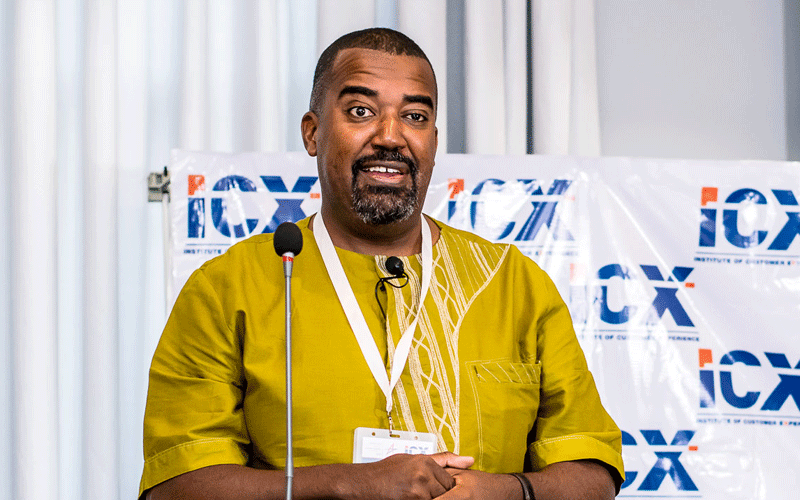My struggle with Bell’s palsy – Eddy Kimani

What started as a normal day for Eddy Kimani, media practitioner and now mental health advocate, transformed into a life-changing situation.
“It didn’t start with a symptom. On a normal working day at an early morning meeting with my colleagues, my face just started acting up.
“I felt numbness on the left side of my face, my tongue had a strange (metallic) taste, and my eye started tearing. The entire left side of my face started drooping,” he says.
Immediately, Kimani went to hospital to seek medical attention, but the doctor was unable to immediately establish what the problem was. It was when he went to Nairobi Hospital for a second opinion that he was diagnosed with Bell’s palsy.
“I was shocked because the previous day I was feeling ok. I am glad I went for a check-up, because the doctor told me I had about 72 hours before it got worse,” he narrates.
Named after Sir Charles Bell, the doctor who discovered it, Bell’s palsy is an unexplained episode of facial muscle weakness or paralysis. It begins suddenly and worsens within 48 hours.
Globally, three out of 10,000 people are affected. Though most make full recovery, it might lead to damage to the facial nerve, to pain and discomfort on one side of the face or head. Unfortunately, there are no local statistics on the condition.
“Because of the drooping face and weakness on one side of the face, people confuse it with stroke. You must go to the hospital to get proper tests to find out what it is,” says Dr Eileen Adhiambo, a medical officer at Kenyatta National Hospital.

While the exact cause of the condition is yet to be known, researchers link it to herpes simplex, the virus that causes cold sores. Dr Adhiambo also says the facial nerve becomes swollen if the virus causes infection near it.
Other factors include diabetes, elevated blood pressures and immune-compromised individuals such as HIV patients and people infected with syphilis and herpes zoster viruses.
To be diagnosed with Bell’s palsy, a series of tests need to be done. On arrival to the hospital, the doctor takes a proper history of the patient and conducts a neurological examination to determine whether it’s stroke or Bell’s palsy.
Other tests include HIV test, Venereal Disease Research Laboratory test, and complete blood count test. A CT scan and MRI can also be done to determine the cause of the lesion.
While symptoms might range from mild to complete paralysis, some of them might include challenges in eating and sleeping, inability to taste at the front of the tongue, drooping in the corner of your mouth, resulting in drooling, sagging eyebrows, watery eyes and a ringing noise in one or both of ears.
For Kimani, Bell’s palsy affected his self-esteem, taking a toll on him to the point of depression.
Being on screen meant being in the public eye and having such a condition was a hit on his line of work, which entailed looking good in the limelight.
“I had to always explain why I am wearing an eye patch and sometimes people would make fun of me. But I, over time, have managed to overcome it and still continue with work on screen for both TV and film,” he says.
For most patients diagnosed with Bell’s palsy, the condition gets better all by itself without any treatment. While some symptoms begin to improve within three weeks, others make a complete recovery within six months.
Nearly three-quarter of patients recover within three to six months. However, beyond the age of 60, one may not recover from it quickly or as fully due to old age.
“If the condition is mild, the doctor will recommend the patient takes some self-help measures to assist in the recovery process.
However, one may require surgery or medication should the situation last longer or become more severe,” says Dr Odhiambo.
Kimani was given medication and attended a number of physiotherapy sessions. The doctors also prescribed him some form of steroids to cure the condition.
“Didn’t experience much of side effects, just the inabilities to blink, which forced me to wear an eye patch for a extended period.
I also experienced tearing of the eye and drying up of the eyeball because the eye was not generating tears naturally. For this, I had to use artificial tear drops,” he narrates.
Though an ongoing process, Kimani still has numbness on his face and tightness on the left side of his face.
“Hot food or drink will make my left eye to tear uncontrollably. But I’m much better than I was when it first hit me,” he adds.
Other available treatment options are facial muscles exercises. Dr Adhiambo recommends trying to actively close the eyes, smile and raise eyebrows for 15-20 seconds to increase the muscle’s range of motion.
Also recommended are co-ordination antiviral drugs like aciclovir, artificial tears to prevent drying out of the cornea or surgery to decompress the nerve.
The effects of Bell’s palsy depend on various factors including how soon the patient begins to recover. Usually, if symptoms start to resolve after three weeks then the recovery is complete.
However, if they don’t start resolving within the first two months, chances of having permanent nerve damage are high.
Effects include weakening of the face muscle (residual paresis), irregular and involuntary face muscle contractions (hemifacial spasms), synkinesis (where a voluntary muscle movement causes a simultaneous and involuntary contraction of other muscle) and spontaneous tearing (crocodile tears syndrome).











